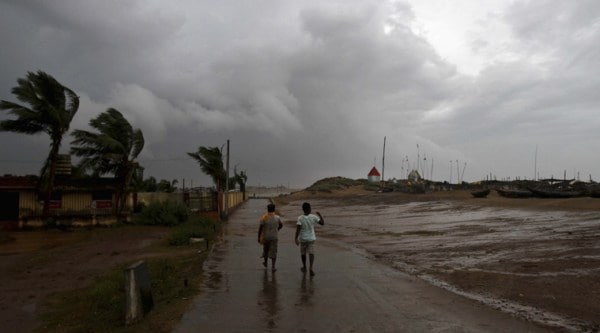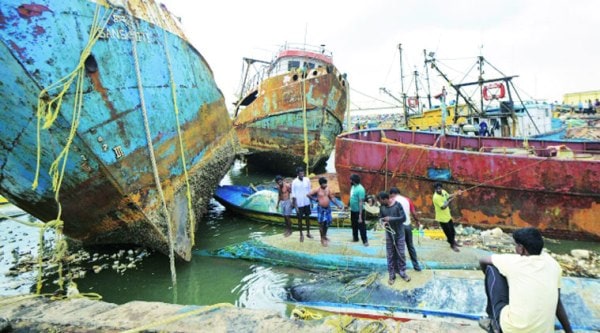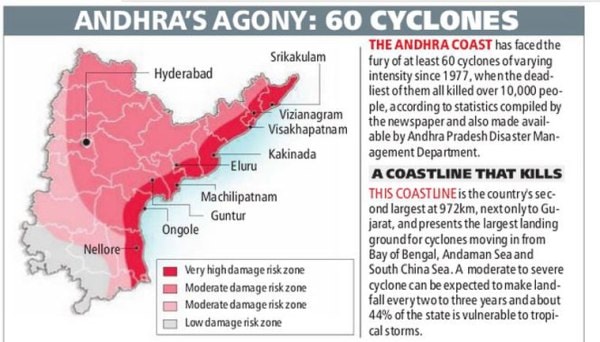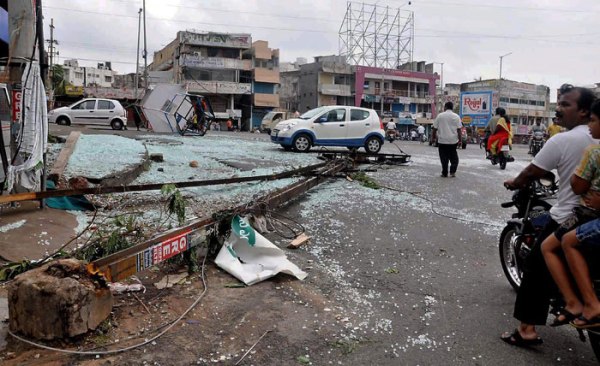- India
- International
Phailin, and now Hudhud, show how India has learnt to tackle cyclones
For the Orissa super-cyclone of 1999, the IMD sent out warnings 24 hours in advance.
 Cyclone Hudhud in Odisha
Cyclone Hudhud in Odisha
Of the 23 cyclones in the last 300 years that have each resulted in loss of more than 10,000 lives, twenty have formed in the Bay of Bengal and affected India. Almost 75 per cent of the cyclones that have killed more than 5,000 people during this time have been in this region. This, despite the fact that only about seven per cent of the world’s cyclones in a year are generated in this region.
And, on an average, cyclones in the Bay of Bengal and the Arabian Sea are of moderate intensity compared to hurricanes in West Atlantic and typhoons in West Pacific regions.
The handling of Phailin last year and the Hudhud now is an indication that things are likely to change for the better. Phailin left 38 people dead, and till Monday evening, the death toll from Hudhud was only 25 — 21 in Andhra Pradesh and four in Orissa.
One reason for the large number of fatalities in the past is that the Indian coastline is densely populated. Also pertinent is the fact that forecast and warning system for cyclones were not well developed.
This second cause is what started getting addressed about five years ago, with coordinated action at many levels: new infrastructure in the form of weather observation stations and faster computers, scientific capacity building through tie-ups with advanced countries, faster communication lines, disaster management plans and an elaborate coordinating mechanism.
For the Orissa super-cyclone of 1999, the IMD sent out warnings 24 hours in advance. In contrast, accurate and detailed warnings were issued five days before Hudhud struck.
But the key to success was an accurate and timely forecast system. That responsibility fell on the shoulders of Indian Meteorological Department, and the experience of Phailin and Hudhud has showed that progress has been made.
For the Orissa super-cyclone of 1999, the IMD sent out warnings 24 hours in advance. In contrast, accurate and detailed warnings were issued five days before Hudhud struck.
“We have consistently improved on our cyclone forecast and warnings over the years. After every cyclone, we calculate the error margin in our forecast and the actual event. This error has been reducing every year. We are now on a par with the Pacific warning system in Japan and only slightly behind the Atlantic warning system in the US,” said M Mohapatra of IMD’s cyclone forecast division.
Mohapatra said significant upgradation in infrastructure enabled improved forecast. Remote sensing data from satellites have provided vital parameters to IMD’s cyclone models. The computing ability has been scaled up by several notches.
At least 30 observation stations have been set up in the Bay of Bengal and the Arabian Sea by the National Institute of Ocean Technology, Chennai. An agreement was signed in 2010, which enabled interactions of Indian weather scientists with their US counterparts. “The result is that today we are able to make accurate predictions about cyclones,” Mohapatra said.
But the success story is not due to the IMD alone. U C Mohanty of the Centre for Atmospheric Sciences at IIT, Bhubaneswar, said that a strategy was coordinated by a variety of agencies.
 Boats damaged by the cyclone in Visakhapatnam on Monday. (Reuters )
Boats damaged by the cyclone in Visakhapatnam on Monday. (Reuters )
“The government treated this issue with urgency. In 2009, a Forecast Demonstration Programme was set up. It was hosted by the IMD but had almost every relevant agency on board. The National Centre for Medium Range Weather Forecasting, the Air Force, the Navy, the Department of Space, academics from IIT Delhi and IIT Bhubaneswar were put in a group to coordinate. The effort has yielded results,” Mohanty said.
“There has been lots of improvement in technology, modelling capabilities and in our infrastructure as well… The days when tens of thousands used to be killed by a cyclone are over,” Mohanty said.
Cyclone forecast and early warning system forms just one part of the National Cyclone Risk Mitigation Project (NCRMP), working since 2006 under the National Disaster Management Authority. The project seeks to ensure effective response, rescue and relief after the cyclone has struck. Phase-I of the project, covering Orissa and Andhra, involves construction of cyclone shelters, roads, bridges and coastal embankments. These shelters have saved thousands of lives during Phailin and Hudhud.
Buzzing Now
May 04: Latest News
- 01
- 02
- 03
- 04
- 05









































